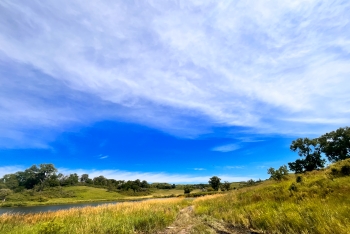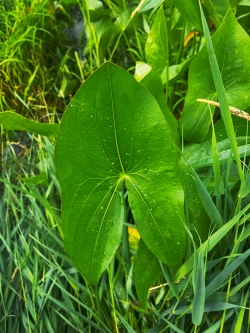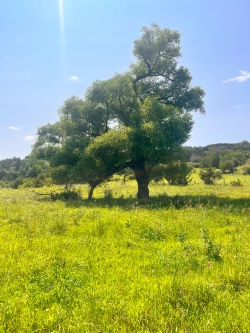After the first two weeks of the internship, our experience went from learning the tools of the trade to applying them in practice. Throughout these three weeks, we focused on our ability to manage landscapes through the following: invasive species removal, assessing fire effects, assessing grazing pressure, seed collection & dispersal, and doing population surveys for rare species.
Biological surveys are a method to ascertain information on the population health of certain species. This is often done through a method called gridding, or a variety of traps including: fence, array, and pit traps. However, with certain organisms you can use other methods of bio-logging, including data-loggers. The information collected from the surveys will then be used to track how populations change overtime, furthering the knowledge on how land management practices are affecting an ecosystem.



Throughout the internship, we got the opportunity to work with a handful of endangered species. It not only was a great experience, but it offered a change of perspective on how small a range for selective species can be once land development alters a landscape. Many of the species we worked with are found in only one or two sites in the state including Massasauga rattlesnakes, Eastern prairie fringed orchids, Yellow mud turtles, Ornate box turtles, and Blanding's turtles. Gaining the opportunity to work hands-on with them was an experience of a lifetime.
A part of land conservation work is habitat restoration. However, when looking to bring back an ecosystem which was once there, you need a seed bank. Seed banks often get their start from remnant ecosystems. In the case of this ecosystem, often remnant sand prairies. Seed collection from these prairies allows for the establishment of more prairies (reconstruction). Thus, creating a cycle for seed collection and dispersal. This allows for the continuation of ecosystems and habitat for organisms which rely on them. This summer, due to the timing of the internship, we did seed collection for Popupine grass (Hesperostipa spartea), June Grass (Koeleria macrantha), and some sedges (Carex).
Throughout our time in The Land of the Swamp White Oak, we had the opportunity to meet with other professionals and experts. This ranged from entomologists, other TNC staff, professors, and other organizations. Not only did this allow us to see other careers within the field, but also begin to network within the field of conservation. TNC as an organization puts relationships with other entities, professionals, and leaders as a priority. The conservation world is a small world, and reputation matters. Through striving to be an inclusive organization, they are allowed to work with experts from around the world, and in many fields.

